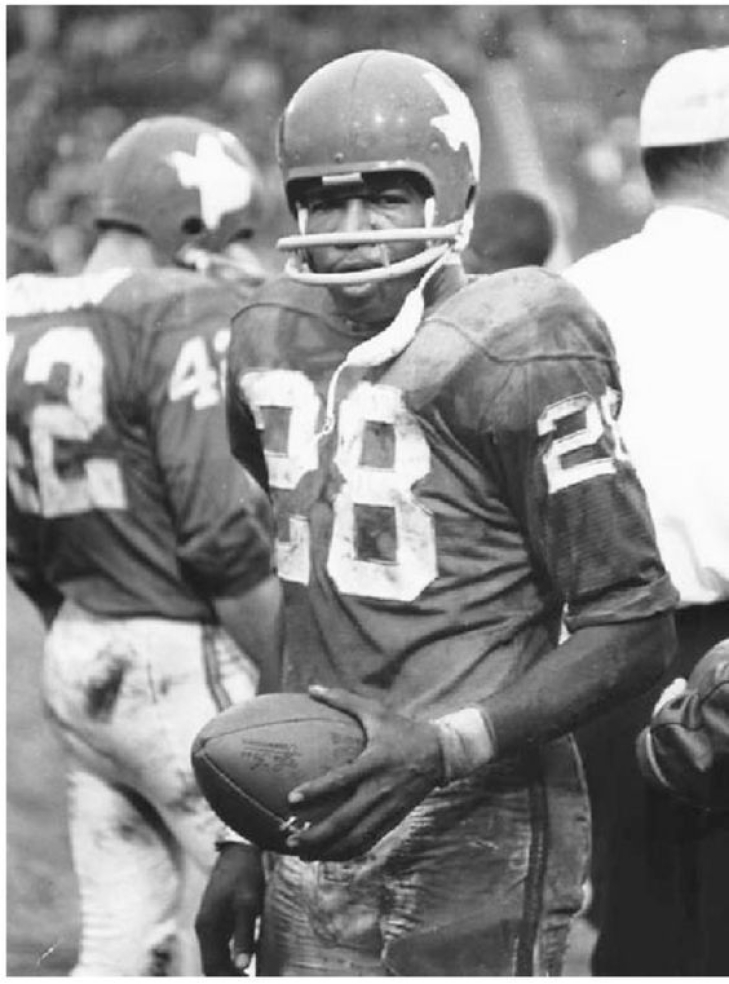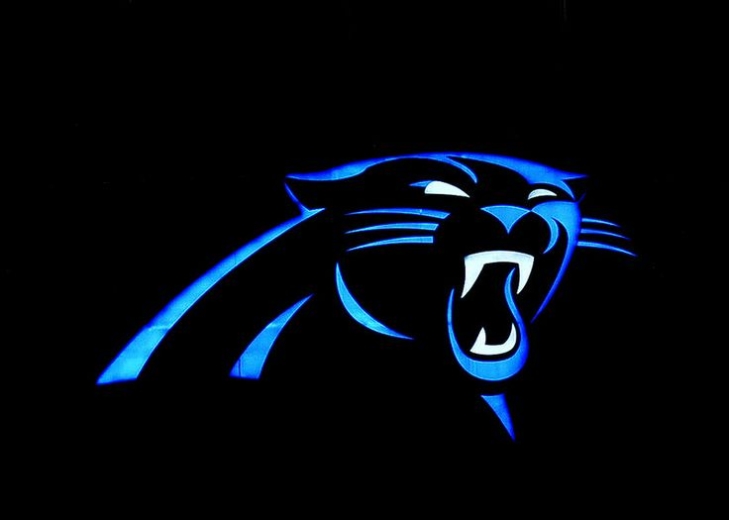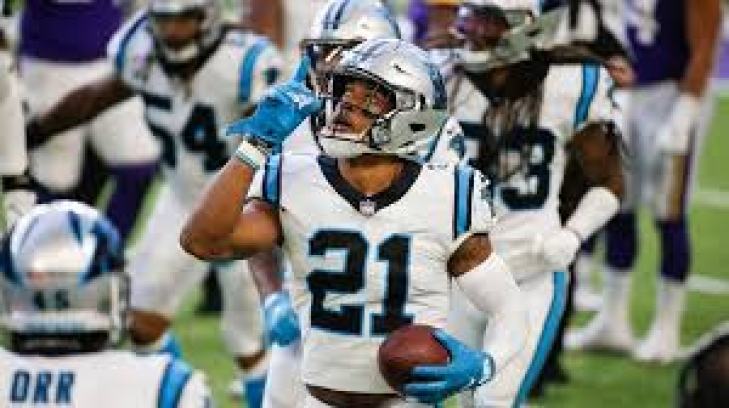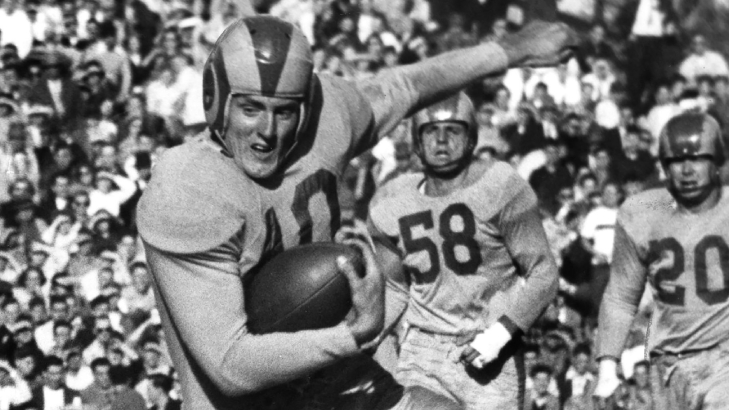
Committee Chairman
RIP: Abner Haynes
Kansas City Football lost one of its early stars, Abner Haynes, who passed away at the age of 86.
Haynes was with the Chiefs from their inception, dating back to 1960 when they were the Dallas Texans. Winning the AFL Rookie of the Year, Haynes would also win the UPI and The Sporting News Player of the Year off of his league-leading 875 Rushing Yards and 9 TDs. A dual-threat Halfback, Haynes led the AFL in Rushing Touchdowns the next two seasons and was a vital part of the team’s AFL Championship in 1962.
With the Texans/Chiefs, Haynes rushed for 3,814 Yards and caught 199 passes for 2,739 Yards with 56 Touchdowns from scrimmage. The man who was the franchise’s first superstar was inducted to their Hall of Honor in 1991.
We at Notinhalloffame.com would like to extend our condolences to Abner Haynes's fans, friends, and family.
Our All-Time Top 50 Carolina Panthers have been revised to reflect the 2023 Season
Yes, we know that this is taking a while!
As many of you know, we at Notinhalloffame.com are slowly generating the top 50 of each major North American sports team. That being said, we have existing Top 50 lists and consistently look to update them when necessary and based on necessity. As such, we are delighted to present our post-2023 revision of our top 50 Buffalo Bills.
As for all of our top 50 players in football, we look at the following:
1. Advanced Statistics.
2. Traditional statistics and how they finished in the National Football League.
3. Playoff accomplishments.
4. Their overall impact on the team and other intangibles that are not reflected in a stat sheet.
Last year, the Panthers had an abysmal year, winning only two games, but as they are still a relatively young franchise, there was surprising movement in the top 50 with two new entries and two elevations.
As always, we present our top five, which saw no changes:
1. Steve Smith
2. Cam Newton
3. Luke Kuechly
4. Julius Peppers
5. Ryan Kalil
You can find the entire list here.
Two-time Pro Bowl Linebacker Brian Burns rocketed to #25 from #41, but he is now a New York Giant.
Offensive Tackle Taylor Moton shot up to #35 from #45.
The first new entrant is Defensive Tackle Derrick Brown, who is coming off his first Pro Bowl. He enters at #43.
The second debut is Linebacker/Safety Jeremy Chinn, who comes in at #45. He is now with the Washington Commanders.
Notably, Nose Tackle Greg Kragen and Cornerback Ken Lucas has been dropped off the list.
We thank you for your continued support of our lists on Notinhalloffame.com.
45. Jeremy Chinn
One of the more versatile defensive players in the early 2020s, Jeremy Chinn came to the Carolina Panthers as a Second Round Pick from Southern Illinois.
In the four seasons he played with the Panthers, Chinn lined up as an Inside Linebacker, Safety, and Cornerback. In his first two years with Carolina, he was one of the better tacklers in the National Football League. Chinn was so good as a rookie that he compiled 117 Tackles with two Fumble Recovery Touchdowns and was the runner-up to Chase Young for the 2020 Defensive Rookie of the Year.
Injuries hampered his effectiveness in 2022 and 2023, specifically a quadricep issue in 2023. As a free agent, he signed with the Washington Commanders for the 2024 Season. Chinn had 324 Tackles for Carolina.
Pro Football Hall of Fame Revisited Project: 1963 FINAL VOTE
1962 Pro Football Hall of Fame Revisited Project Class.
Here we are! Again!!
If you have been following our Pro Football Hall of Fame Revisited Project, you know that we have asked the rhetorical question: What if the PFHOF began in January 1946?
After soliciting and obtaining a passionate group of football fans and historians, we sent out a ballot for a Preliminary Vote, in which we asked each voter to give us 25 names as their semi-finalists and 5 in the Senior Pool. Following that, we asked the group to vote for their 15 Finalists in the Modern Era and 3 in the Senior Category. The final stage was to vote for their five Modern Era inductee and one Senior inductee.
This is the result of the eighteenth official class;
Below are the final results of this project based on 32 votes,
Remember that the group took a vote in “1963”, and we have reverted back to the top five candidates entering the Hall PROVIDING THEY MAKE 50% of the vote. This will be put to a vote again in “1966”.
This is for the “Modern Era”
*Bold indicates they have been elected to the Pro Football Hall of Fame Revisited Class of 1963:
|
Player |
Year of Eligibility |
Vote Total |
|
Elroy Hirsch E-HB-DE |
1 |
29 |
|
George Connor T-LB-DT-G |
3 |
21 |
|
Frank Gatski C |
1 |
16 |
|
Dick Barwegan G |
4 |
13 |
|
George Christensen T-G |
20 |
10 |
|
Lou Rymkus T |
7 |
9 |
|
Ace Gutkowski FB-TB |
19 |
8 |
|
Marshall Goldberg FB |
10 |
8 |
|
Whizzer White TB-HB |
17 |
7 |
|
Pat Harder FB |
5 |
7 |
|
Ed Sprinkle DE-E-G-LB |
3 |
7 |
|
Ward Cuff WB-QB-HB |
11 |
5 |
|
Bill Osmanski FB |
11 |
5 |
|
Buckets Goldenberg G-BB |
13 |
4 |
|
Woody Strode E |
9 |
3 |
This is for the “Senior Era”,
*Bold indicates they have been elected to the Pro Football Hall of Fame Revisited Class of 1963.
|
Tony Latone |
8 |
16 |
|
Al Nesser |
7 |
7 |
|
Hunk Anderson |
13 |
6 |
|
None of the Above |
N/A |
3 |
About the 1963 Inductees:
Elroy Hirsch E-HB-DE, CHR 1946-48, RAM 1949-57: Inducted in the Pro Football Hall of Fame Revisited Project in 1963 on his 1st Ballot. Inducted into the actual Pro Football Hall of Fame in 1968.
Dubbed “Crazy Legs” because of the strange, jerky way his legs moved when he ran, Elroy Hirsch was one of the most outstanding college players ever. Despite his collegiate success, getting going as a professional took him some time.
Hirsch joined the Chicago Rockets of the AAFC instead of the Los Angeles Rams of the NFL, but he would later call it the worst decision he ever made. The Rockets were awful, and though Hirsch was competent, he was expected to be spectacular. A contract dispute allowed Hirsch to leave the AAFC, and he joined the Rams in 1949.
Hirsch struggled initially, but a shift to the End position rejuvenated him. His 1951 season was one of the best in Rams history, as he led the NFL in Receiving Yards (1,495) and led the Rams to the NFL Championship. He remained one of the top Ends over the next few years and still owns one of the best nicknames in sports.
George Connor T-LB-DT-G, CHI 1948-55: Inducted in the Pro Football Hall of Fame Revisited Project in 1963 on his 3rd Ballot. Inducted into the actual Pro Football Hall of Fame in 1975.
George Connor was a two-time National Champion at Notre Dame, and he would parlay the skills he learned with the Fighting Irish to nearby Chicago with the Bears for a stellar eight-year career.
An All-Pro on both sides of the ball (Offensive Tackle, Defensive Tackle, and Linebacker), Connor was primarily used on the offensive line in his first two years. Still, his athleticism made him a natural to try at Linebacker. He was arguably better in that role, which likely landed him a spot in Canton.
Frank Gatski, C-LB, CLE 1946-56, DET 1957.: Inducted in the Pro Football Hall of Fame Revisited Project in 1963 on his 1st Ballot. Inducted into the actual Pro Football Hall of Fame in 1985.
Frank Gatski played college football at Marshall and then joined the American military during World War II. Following the war, Gatski tried out and made the Browns in their inaugural season of the AAFC. Gatski, or "Gunner" as he was known, opened the holes for Motley and expertly protected Graham for years. Easily the best Center in the AAFC, he helped Cleveland win all four Championships and proved his worth in the NFL as the Browns won the NFL Title in their first year after the NFL-AAFC merger.
Gatski, who was so good that he never botched a snap over his entire career, helped the Browns win the 1954 and 1955 Championship, and in his last year in the NFL, 1957, he was with Detroit and won an eighth title.
Tony Latone G-E-C, POT 1925-28, BOS 1929 & PRV 1930: Inducted in the Pro Football Hall of Fame Revisited Project in 1963 on his 8th Senior Ballot. Was never inducted into the actual Pro Football Hall of Fame.
Nicknamed the “Human Howitzer,” Tony Latone’s path to professional football did not come from the college ranks, as he played semi-pro and worked in the coal mines of Western Pennsylvania. He finally joined the NFL with Pottsville Maroons in 1925, and he is believed to be the unofficial rushing leader of the 1920s. Latone allegedly rushed for 2,616 Yards in six seasons, and the legendary George Halas stated that Latone would have been an all-time great had he gone to college and honed his craft early.





